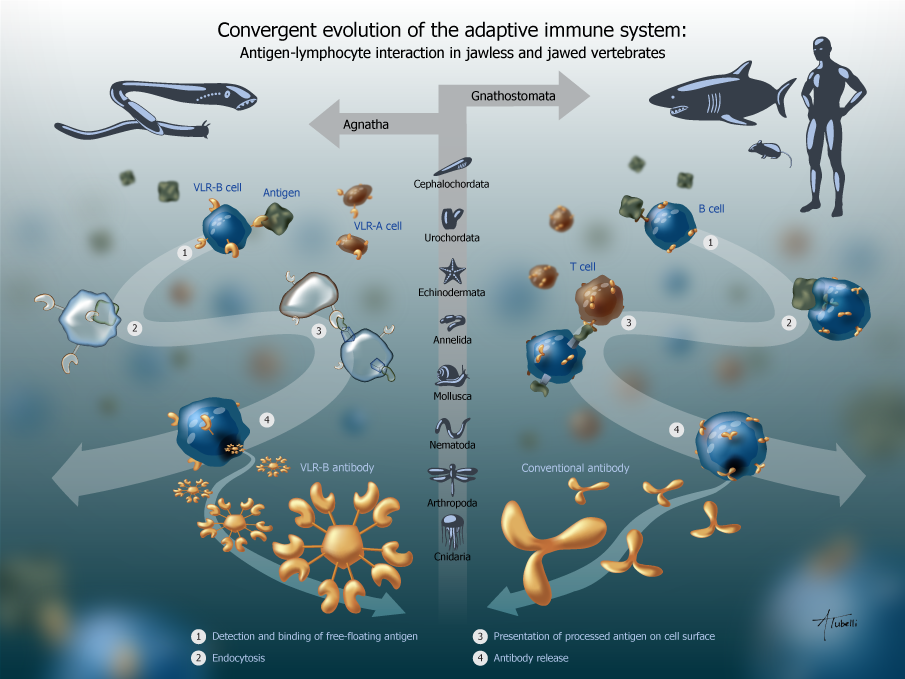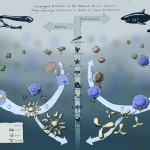
The immune system in invertebrate phyla gradually evolved from cnidarians to the subphylum cephalocordata. The evolutionary pathway then gave way to vertebrates: first jawless vertebrates (agnatha; sea lampreys and hagfish) and then jawed vertebrates (gnathostomata). Both groups exhibit similar antigen-lymphocyte interaction pathways. The difference between the two groups is the shape of their antibodies. Jawed vertebrates typically have Y-shaped antibodies. The VLR-B antibodies found in agnathans, however, have a decameric structure. The unique shape of the VLR-B antibodies is being researched for the possible detection of cancer cells or HIV, which cannot currently be detected by human antibodies.
This piece was created for Dr. Goetz Ehrhardt of the University of Toronto.
1. Deng L, Velikovsky CA, Xu G, Iyer LM, Tasumi S, Kerzic MC, Flajnik MF, Pancer Z, Mariuzza RY. (2010) A structural basis for antigen recognition by the T cell-like lymphocytes of sea lamprey. PNAS 107: 13408-13413.
2. Cooper MD, Alder MN. (2010) The evolution of adaptive immune systems. Cell 124(4): 815-822.
3. Dr. Goetz Ehrhardt, personal communication.


